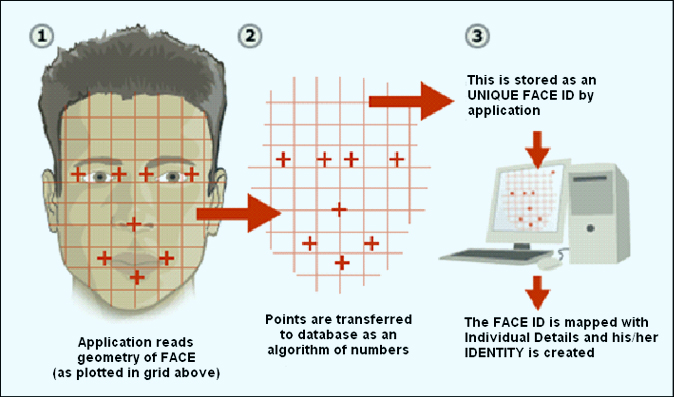Escape
From IT
Contents |
Introduction
This short story aims to explain how to avoid being tracked on the web or through the use of new technologies. In fact, nowadays every move through the web or in real world is recorded somewhere. To make reading more enjoyable the text is presented in story form.
Before starting the reading, the following assumptions must be taken into consideration:
- The story is invented and inspired by the family of Al Capone: which was a U.S. criminal, of Italian origin, considered a symbol of American gangsterism and the crisis of legality that the U.S. had to face during the twenties.
- The end of the story is in your hand. Choose the course of story, decide how to continue the adventures.
Chapter 1
Christmas 2011, the day I decided to run away
Christmas lunches and dinners: we are forced to invite relatives that we never see, except at Christmas. And often, the Christmas lunch becomes an excuse to see resurgence old conflicts that seemed dormant. My secret was to take a Zen attitude and to remember that the deeper meaning of Christmas is to give hospitality to those who live alone or far away and maybe they wants to see us more. But often my attitude was not enough, as well as the attempt to settle with care the seating plan. In fact, it must be admitted, my family was not exactly the most common one. My great uncle Al, Alphonse Gabriel "Al" Capone, was a well-known Italian-American gangsters and my whole family turned around the world of criminality. Until the activities were conducted without the help of the Web, their influence was limited to the city of Chicago, but since Internet was invented the organization was infiltrating in many American cities. My parents were very worried for my safety. In fact, since I became adult, my uncle insisted in let me be part of the family “activities”. So, in December 2011, my parents and I decided it was time to leave the United States. The day chosen was December 25. During the Christmas lunch, when the family was gathered around the supper table, I left.
Chapter 2
The departure
The bag was ready, the life savings of my parents were inside, the false passport created by my cousin Calogero was in my pants, as well as air ticket to Europe. While the capon stuffed with chestnuts was served, I got up from the table. And, I left.
The measures introduced to improve the level of security in customs and especially at airports - subsequent to the dramatic events of 11 September 2001- had led to the creation of the electronic passport. My cousin, Calogero, a nerd with incredible talent, had contacted his friend Phil, who was part of a group of hackers called THC (The Hackers Choice). His friend and him put in place my documents. The falsification of the passport had proved to be a fairly simple task, even understandable for me. In practice they inserted a smart card that integrated an RFID chip reprogrammed. Before that day I did not know what it was. So some days before I googled it and Wikipedia explained me that “Radio-frequency identification (RFID) is a technology that uses radio waves to transfer data from an electronic tag, called RFID tag or label, attached to an object, through a reader for the purpose of identifying and tracking the object. Some RFID tags can be read from several meters away and beyond the line of sight of the reader”. Several meters... I was worried... So I decided to continue my search in order to understand if I was in danger. Fortunately I discovered that exists two types of RFID: active and passive ones. The active RFID “has a transmitter to send back information, rather than reflecting back a signal from the reader” and “most active tags use a battery to transmit a signal to a reader. However, some tags can gather energy from other sources. Active tags can be read from 300 feet (100 meters) or more, but they're expensive (typically more than US$20 each). They're used for tracking expensive items over long ranges. For instance, the U.S. military uses active tags to track containers of supplies arriving in ports.” (RFiD Journal. GLOSSARY OF RFID TERMS: Active tag.. I did not feel reassured until I discovered the existence of Faraday protection bags for e-passport security: which of course I immediately bought.
After its implementation, the passport was checked by a friend of Phil in an airport and seemed to work. But even if the document issue seemed to be solved, my fears - regarding the check-in - were not reduced. In any case, the next issue to solve was the facial and gait recognition.
In fact, the activities of my family included the search of enemies and the identification of family members in case of problems. Uncle Alfonso had a big team of computer scientists working for him. And, on a secret server all the information about family, friends and enemies were collected, including of course mine. Moreover they were able to view images related to the airport webcam. I had to find a way to not be recognized.
The first solution was to cancel my card from the database. But this was too dangerous. If I asked someone it would be suspicious and if I had manipulated the database someone would surely notice it. The only solution was to make myself invisible to computer systems. How? Let’s talk about facial and gait recognition.
Again, I submit myself to a session of Google self-learning, i.e. I googled facial and gait recognition. It was amazing. I discovered that facial recognition researches started in 1989, when a brilliant professor, Dr. Eng. Teuvo Kohonen, interested in pattern recognition and informatics decided to apply his theories to this field. In more than twenty years of course things have changed. Today you can really recognize people from a video or image and be sure of its identity. You can even make predictions about his future appearance! But how does it work? Every face is different and characterizable with distinguishable landmarks, called nodal points, it means the different peaks and valleys that make up facial features. They are many software dedicated at this practice but in general we can say that each human face has approximately 80 nodal points. The data relating to a face - Distance between the eyes, width of the nose, depth of the eye sockets, etc. - are represented numerically in a vector or in a matrix. The image below show the process of Face ID creation.
And now, how avoid recognition? Again, internet gave me the response. I found a very interesting video on Youtube and I suggest to look at it.
Sunglasses? I have it. Hooded sweatshirt? of course! Gait recognition now.
Few months before my departure I read an interesting book titled “Little Brother”. Which tells the story of a boy, with excellent computer skills, who knows - among other things - how to avoid gait recognition.
In fact, as for facial recognition, the systems can fail if some variables affect recordings.
As mentioned above, my family already had a sample of my posture. So the only thing to do was to "disguise" my nature. First of all the database contains samples of walking silhouettes corresponding at each known person. And, when you search for someone, you compare the new sample with those in the database. The closer the two sets are, the higher is the probability to recognize someone. See following schema.


These recognition systems are becoming more and more powerful, because the population is more and more video surveilled. But I had the solution in my hand. Really, in my hand: a handful of sand. No, It is not a metaphor, my idea was to buy a new pair of shoes and put it inside some sand. The completely new sole in combination with sand would have caused a change in my posture. As a result, the systems would not be able to recognize me.
I was ready. At least I thought. In any case I went to the airport and I took the fly.
Chapter 3
How to contact my family
I arrived in Rome a dreary January morning. There, an old friend of Dad was waiting for me. I really missed the family: so I had to find a way to contact them and tell them that I was fine.
SottoCAP
Titolo
- Elenco numerato-1
- Elenco numerato-2
- Elenco puntato-1
- Elenco puntato-2
Bibliography
- RfiD Journal. LOGISTICS EXPERT VIEWS. Readers That Sense Distance
- Masaki Yamazaki, Yen-Wei Chen and Gang Xu. Human Action Recognition Using Independent Component Analysis
http://www.passport-stronghold.com/
(RFiD Journal. GLOSSARY OF RFID TERMS: Active tag. http://www.rfidjournal.com/article/glossary) http://www.paraben-forensics.com/rfid-passport-security.html
http://anonymouse.org/anonnews.html

